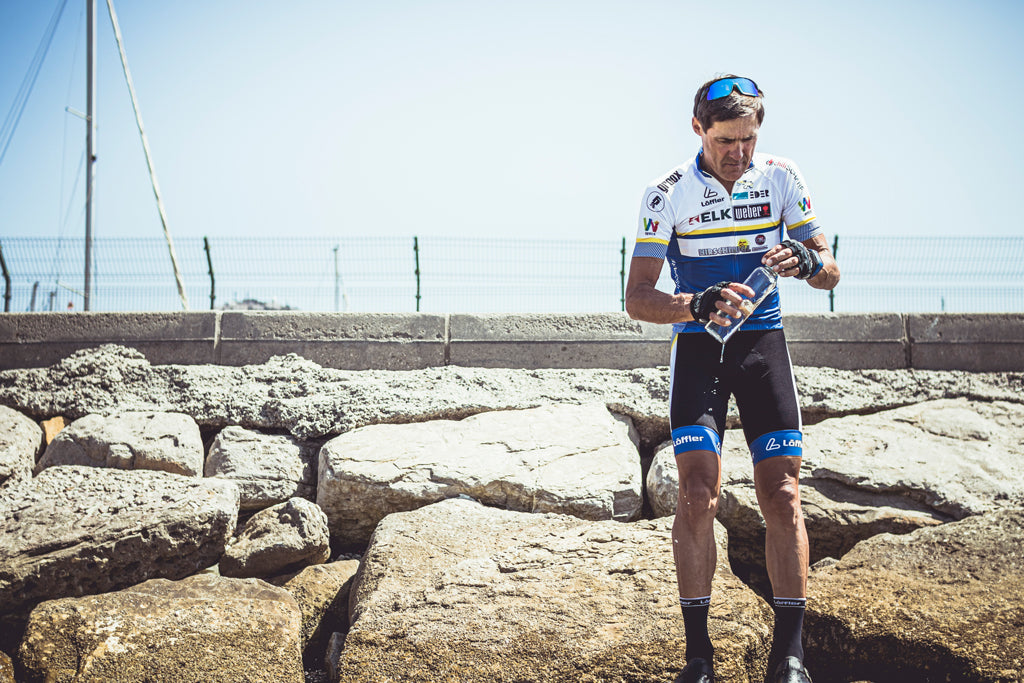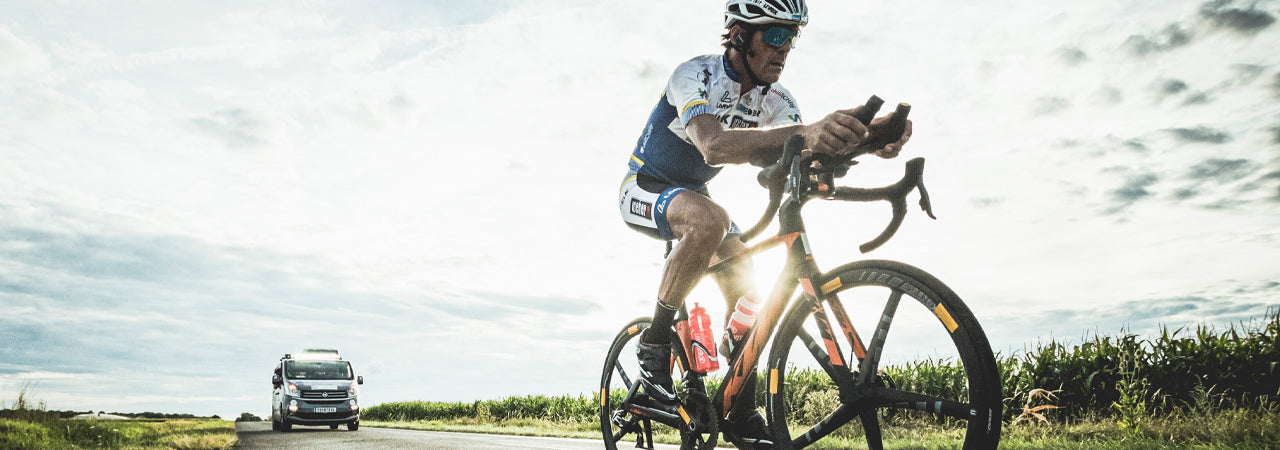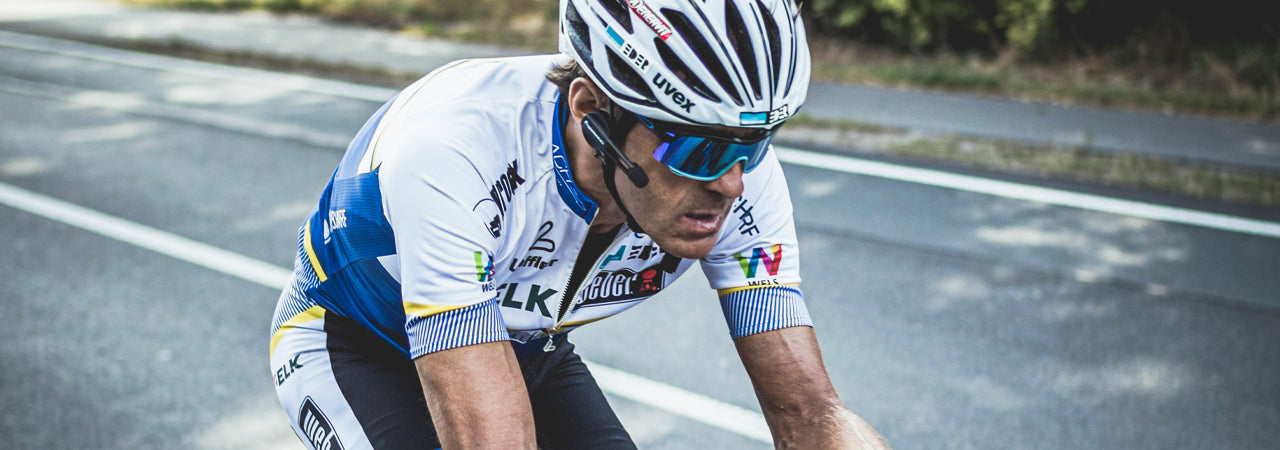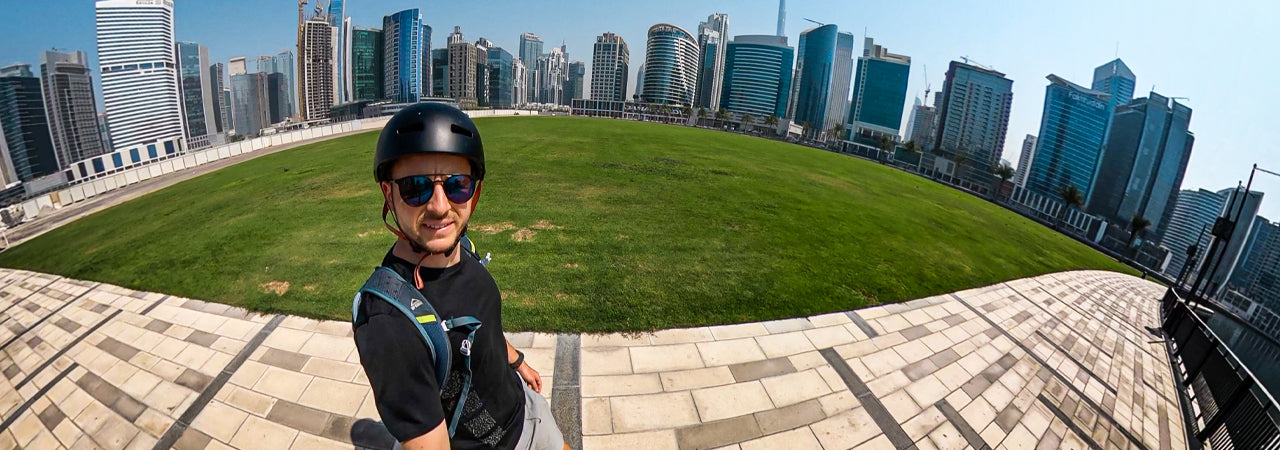Cycling should be fun! J-Athlete & extreme athlete Wolfgang Fasching is back. After his first blog about equipment, he reveals in his new blog the best practice tips for more fun while cycling. Whether beginners or hobby athletes here is something for everyone!
What should you consider before cycling?
Cycling is a sport for everyone. Few sports can be so well dosed and adapted to the current performance. Nevertheless, there are a few things to keep in mind.
Know your bike
The equipment does not play an insignificant role in cycling. I'm not saying that you have to spend thousands of euros to be able to ride a bike properly, but you shouldn't go for the cheapest products either if you don't want the fun to be over right away. On the subject of equipment, however, I have already gone into detail in mylast blog. Just take a look..
Before each ride, you should always perform a quick visual inspection of your bike. Make sure that everything is in order. Do not forget to check the air pressure of the tires and the brakes. Because the most important thing is that you are safe on the road.

Plan your workouts
Make a plan for when you would like to go cycling and stick to it. The routine will help you stick to it. Ride a shorter distance 2-3 times a week rather than 1 long distance every few months. You can compare this to reading a book. If you read a page or two every day, you get more out of it than if you read a chapter every half year. So don't go cycling only once a year, but try to do it regularly, that way you will increase the best.
Know your track and the conditions
Before you go cycling, you should always have an approximate plan in mind. The most important points are the time, the environment or the route profile as well as the weather conditions.

If your route includes road sections, I don't recommend riding at 7 - 8 am or 4 - 5 pm in the afternoon, as these are the usual rush hours in road traffic. Also, take into account the elevation gain and the distance you plan to travel in order to bring extra clothing, fluids, etc. Of course, you should also check the weather forecast before the trip so that you are prepared for anything.
What to consider while cycling?
In principle, there is nothing to stop you from getting on your bike and starting to ride. It is important to start with a low frequency and little resistance until you are warmed up and only then increase the intensity. For example, if you want to do a tour with a few climbs, you should warm up sufficiently on the flat beforehand.
Especially for beginners, I recommend taking your time, being patient and starting in a controlledmanner. You'll get a little fitter with each ride, and you'll be able to slowly work your way forward.
During the ride you should choose a speed where you ride between 60 - 70% of your capacity. Then you are in the optimal training range, the so-called basic endurance. To find out this range, a sports medical performance test is highly recommended. Through the sports medical test you know how far you can go and when your performance limits are reached.
"Challenge yourself, but don't permanently overwhelm yourself!"
A high cadence with an easier gear is more recommended when riding than a lower frequency with a hard gear. Between 60 and 90 revolutions per minute is a good guideline. There are both cycling computers and heart rate watches that allow this measurement using additional sensors. This allows you to monitor and adjust the frequency. Also make sure you have a round pedal!
"Enjoy the surroundings instead of U2!"
Last but not least, I am a clear opponent of cycling with headphones. It can be very dangerous if you close yourself off from the environment and can't hear anything. Enjoy nature instead of distracting yourself with songs from your favorite band.
Food and drink
Drinking is more important than eating! Basically, you should always have enough to drink while cycling. Calculate about half a liter per hour ride!
"If you open the bottle while driving, you'll have the drink in your face, but not in your mouth where it belongs."
Choose an electrolyte drink, carbohydrate drink or apple juice, but without carbonic acid! Because the carbonic acid is not good for the body or for the bottle. Carbonated drinks bubble up when they are warmed by the sun. If you open the bottle while driving, you'll have the drink in your face, but not in your throat where it belongs.

I also recommend two bottle cages so you always have an iron reserve with you. You should not start drinking when you are thirsty, but take 1 - 2 sips regularly. You also need to learn how to drink while riding. It sounds trivial, but taking out the bottle, opening it, drinking and putting it back in the basket should be practiced.
What you drink and eat before and after cycling is your decision. Pay attention to your feeling and listen to your body. It is usually advisable to eat a snack and drink small amounts before and after the ride. In addition, you should always take an energy bar or a banana as a reserve.
What should I pay attention to after cycling?
After the ride is before the next ride. In this respect, I also recommend checking the bike. Check the bicycle tube regularly and replace it preventively about 1x a year. Also the tire casing gets heavely stressed, depending on the frequency of your trips. I would recommend to regularly check your Bike.
Of course, your body also needs some attention after cycling. I advise you to do some light stretching to loosen up your muscles after the effort. Relaxation exercises for the back are also important, as this is very stressed due to the curved sitting position on the bike.
How can I get in shape for cycling?
Cycling trains a lot of body parts, which means that especially for hobby cyclists no additional training is absolutely necessary. Of course, there are still a lot of different forms of strength training, from which you can benefit very much when cycling. However, I am of the opinion that a proper stabilization training is completely sufficient. Stabilization training strengthens your body tension by strengthening your postural muscles. Stronger core and back muscles will save you from a lot of pain. I mostly do isometric exercises, i.e. holding exercises without movement, such as the plank. You can find a lot of exercise instructions on the Internet and there is also a lot of literature on the subject.
But now enough of the theory. Get on the bike and have fun...





